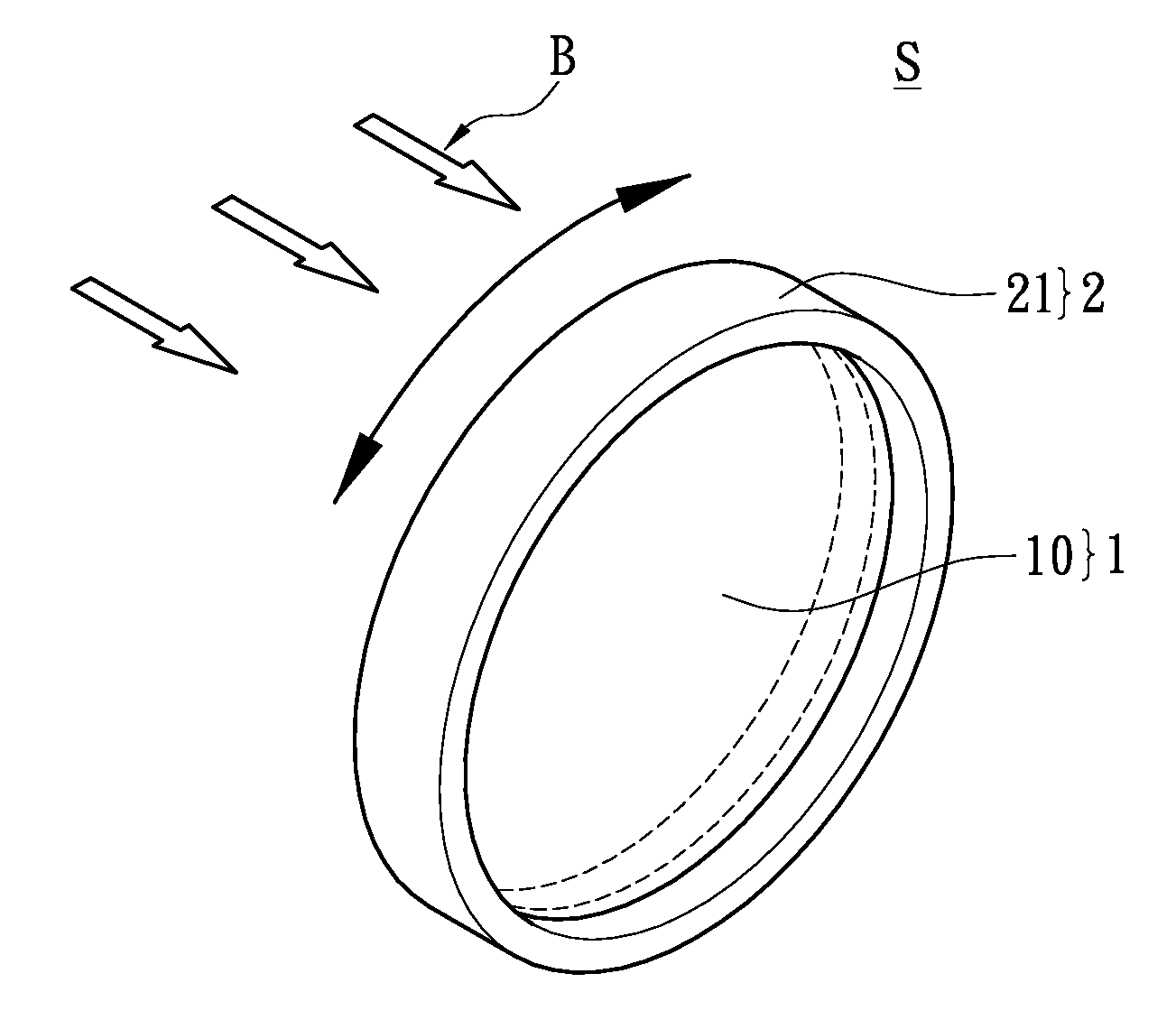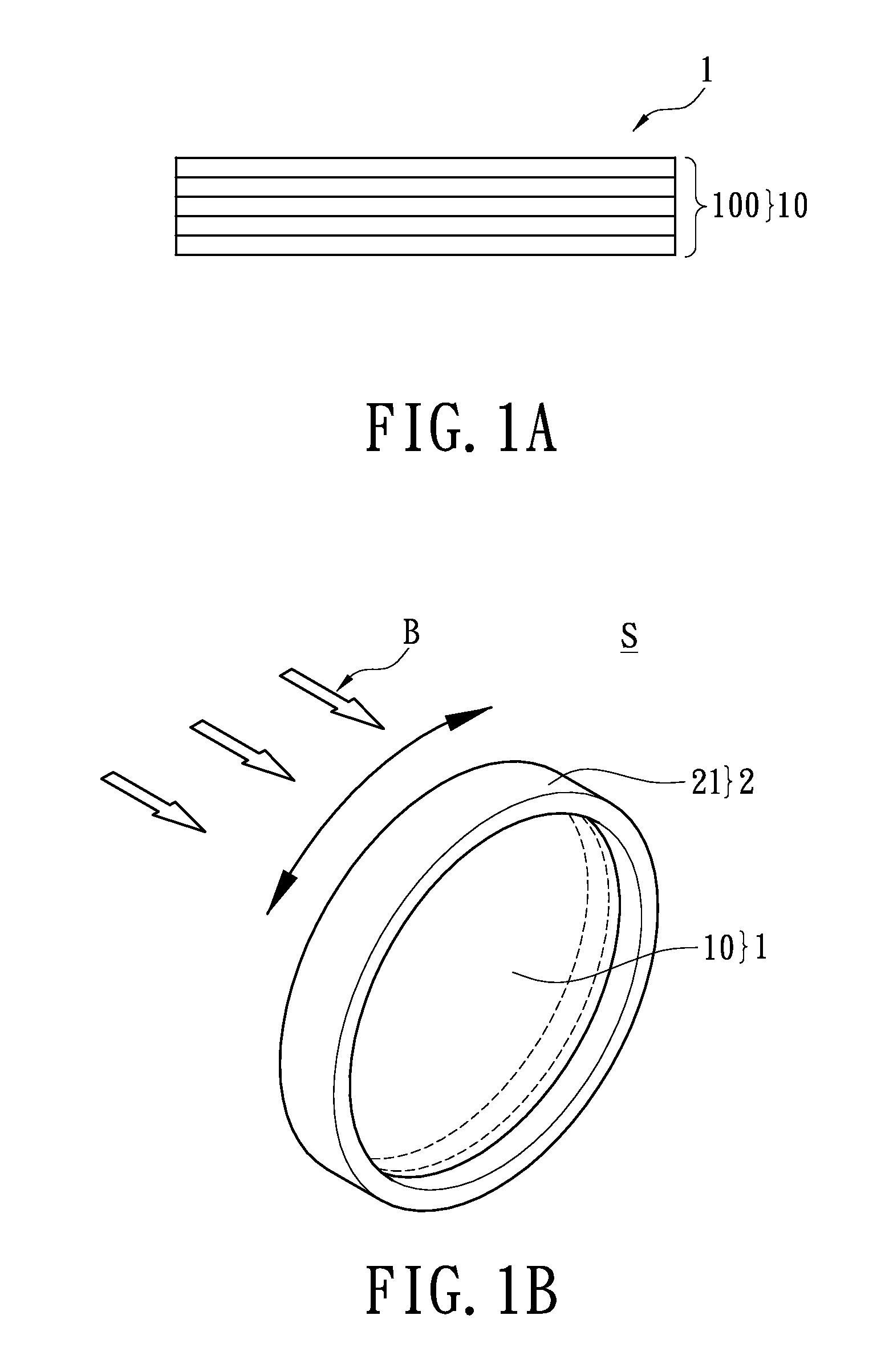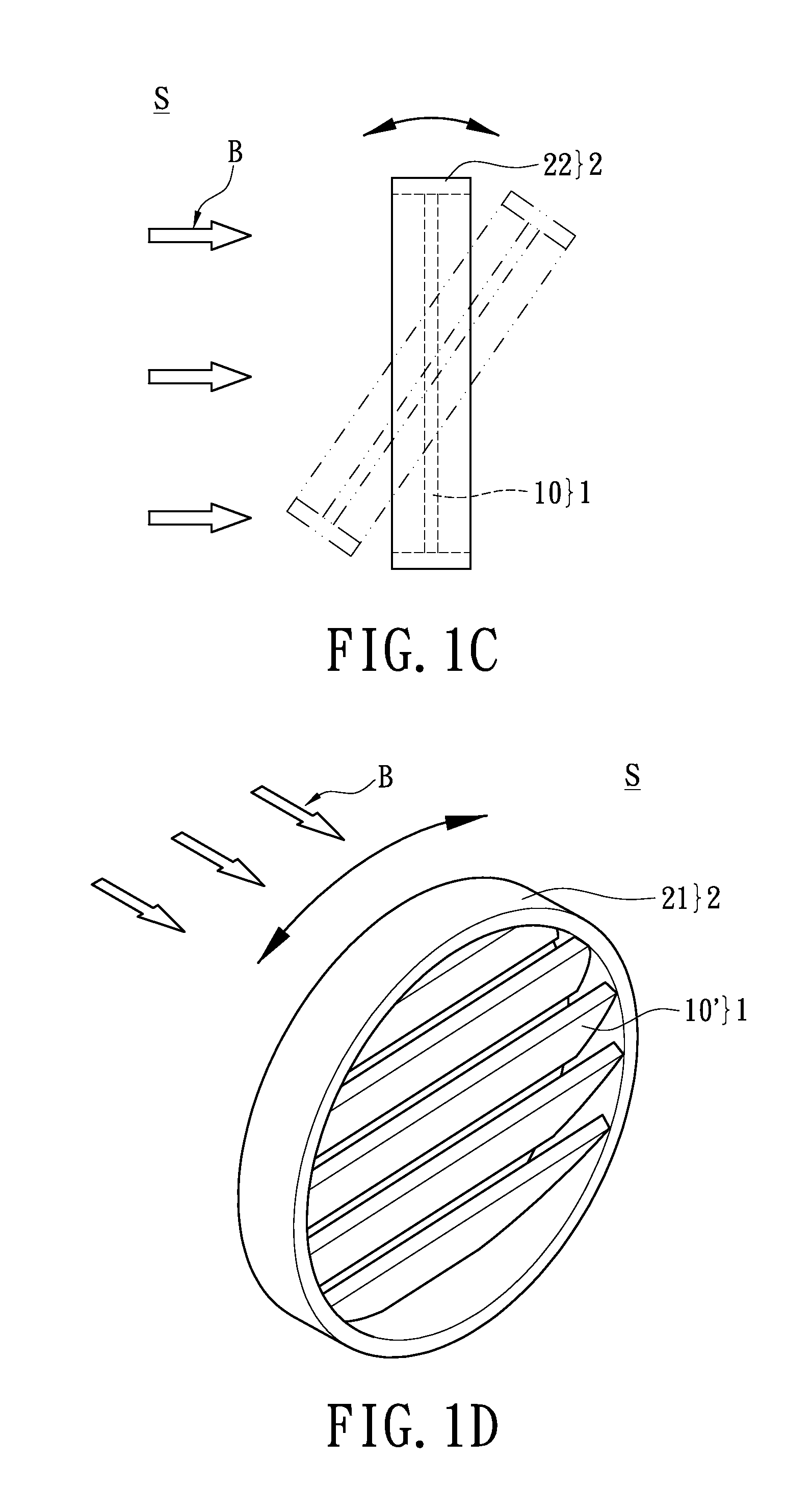Light-uniforming Anti-glaring structure and light-emitting device
a technology of light-emitting devices and anti-glare, which is applied in the direction of lighting and heating devices, polarising elements, instruments, etc., can solve the problems of contrast glare, user discomfort, affecting the viewing comfort of users, etc., and achieve the effect of greatly reducing the effect of glare on users
- Summary
- Abstract
- Description
- Claims
- Application Information
AI Technical Summary
Benefits of technology
Problems solved by technology
Method used
Image
Examples
second embodiment
[0043]Reference FIG. 2, the significant difference from the first embodiment (as shown by FIG. 1A) is that at least one surface (such as a first surface or a second surface) of the multilayer reflector 10 forms a surface structure 11, and the surface structure 11 is mixed with a plurality of diffusion particles 110. For example, the surface structure 11 that is mixed with a plurality of diffusion particles 110 can through any formation methods, form on the first surface or the second surface of the multilayer reflector 10. Thereby, the surface structure 11 mixed with a plurality of diffusion particles 110 can selectively form on the first or second surface of the multilayer reflector 10.
[0044]For example, FIG. 2 shows the multilayer reflector 10 on a surface (defined as a first surface) outside of the inter-stacked polymer films 100 formed a surface structure 11 via extrusion or coating. The surface structure 11 can generally be formed by micro structure of the length and width betw...
third embodiment
[0048]Also, reference FIG. 3, the significant difference from the second embodiment (as shown by FIG. 2) is that the first surface and the second surface of the multilayer reflector 10 forms a surface structure 11, and the surface structure 11 is mixed with a plurality of diffusion particles 110. For example, the surface structure 11 that is mixed with a plurality of diffusion particles 110 can through any formation method, form on the first surface and the second surface of the multilayer reflector 10. Thereby, the surface structure 11 mixed with a plurality of diffusion particles 110 can simultaneously form on the first and second surface of the multilayer reflector 10. Furthermore, the user may also selectively add the aforementioned microstructure 11a which can be a self-cleansing layer or a photo-catalyst layer.
fourth embodiment
[0049]Reference FIG. 4 the significant difference from the third embodiment (as shown by FIG. 3) is that the surface structure 11 mixed with a plurality of diffusion particles 110 can be replaced with a diffusion membrane (or a amplification membrane) mixed with a plurality of diffusion particles 110′. In other words, the first surface or second surface of the multilayer reflector 10 can be laminated with a diffusion membrane (or an amplification membrane) 11′, and the diffusion membrane (or amplification membrane) 11′ is mixed with a plurality of diffusion particles 110′. For example, FIG. 4 shows both sides of inter-stacked polymer films 100 of the multilayer reflector 10 utilizing optical cement to laminate with substrate 12, which includes the aforementioned first surface and second surface, thereby both the upper and lower side forms corresponding surface structure via coating; and by the same reasoning the diffusion particles 110′ can be formed at the same time, thereby formin...
PUM
 Login to View More
Login to View More Abstract
Description
Claims
Application Information
 Login to View More
Login to View More - R&D
- Intellectual Property
- Life Sciences
- Materials
- Tech Scout
- Unparalleled Data Quality
- Higher Quality Content
- 60% Fewer Hallucinations
Browse by: Latest US Patents, China's latest patents, Technical Efficacy Thesaurus, Application Domain, Technology Topic, Popular Technical Reports.
© 2025 PatSnap. All rights reserved.Legal|Privacy policy|Modern Slavery Act Transparency Statement|Sitemap|About US| Contact US: help@patsnap.com



